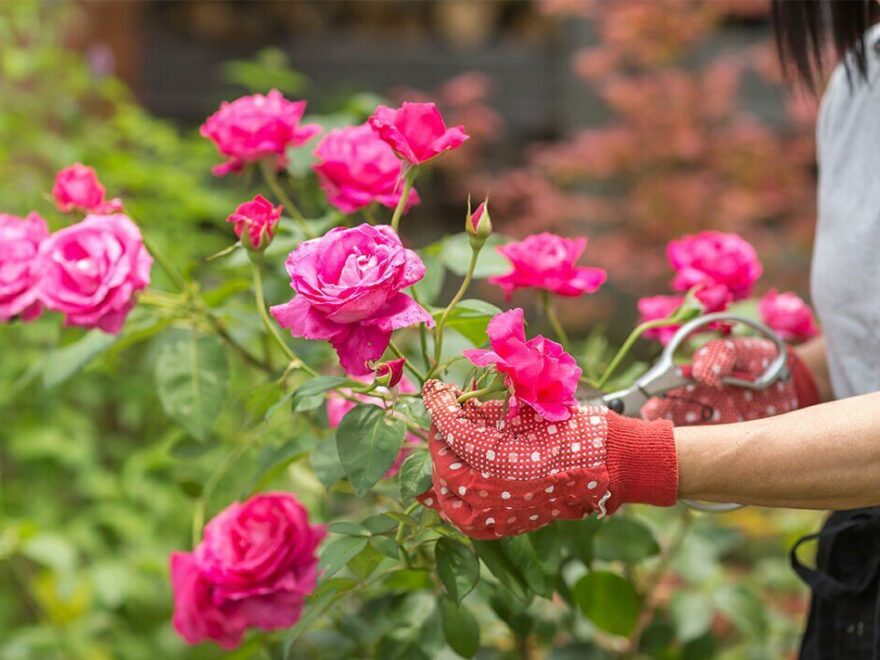Alan Titchmarsh explains how to correctly prune roses
The hot weather may be a welcome change to many of us after a particularly bleak winter, but the scorching sunshine is not as beneficial for all our garden inhabitants.
Roses, especially, can suffer in hot weather, turning yellow and wilting in the heat. But one gardening expert, who this year launched five new roses at RHS Chelsea Flower Show, has shared their tips on how to keep your roses healthy this summer.
Philip Harkness, co-owner of Harkness Roses, insists that prevention surpasses cure, and claims the secret lies in fostering an appropriate environment for your plants.
He told InYourArea: “Make sure you have sunlight and the roses aren’t in places which are too dark and overcrowded. If they are near a big hedge, they are going to be struggling for water and for light and if the plant is under stress it is more prone to become unhealthy.
“Think of plants as people. They do suffer stress in hot, dry conditions and if there’s competition. If you get the underlying culture and environment right for them, they should fare far better than if they are undernourished, under-watered or overwatered.”

Consistent feeding is crucial to maintaining your roses’ vitality. Philip suggests a fortnightly liquid feed, as well as making sure there is enough air circulation around the plant.
He also hails the benefits of early morning watering, particularly for potted roses.
However, Philip acknowledges that some gardeners will occasionally have to contend with common rose afflictions, such as black spot which is recognisable by black markings on the leaves.
This airborne fungus often emerges after the first flowering when the plant’s defences are lowered in favour of blooming.
Philip suggests a granular feed in May and June, along with the addition of a rose fertiliser in early June. Summer pruning can also mitigate black spot damage.
Other concerns include rus, identifiable by small orange pustules that darken with age, and requires the immediate removal of affected leaves.
Mildew, which appears as white, powdery patches, is common from August onwards, particularly in damp atmospheres or when the plant is not watered properly during hot spells.
If your plant is struck by mildew, Philip says you should allow the affected flowers to bloom before trimming the stem, helping the plant recuperate.
To combat greenfly, Philip suggests using a garlic spray as an effective deterrent. If a greenfly invasion occurs, a weak washing-up liquid solution can be applied to them, causing the water to adhere and drown them.
This article was crafted with the help of AI tools, which speed up Express.co.uk’s editorial research. A content editor reviewed this content before it was published. You can report any errors to [email protected].
We use your sign-up to provide content in ways you’ve consented to and to improve our understanding of you. This may include adverts from us and 3rd parties based on our understanding. You can unsubscribe at any time. More info
Source: Read Full Article
